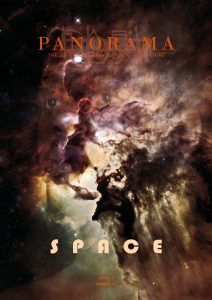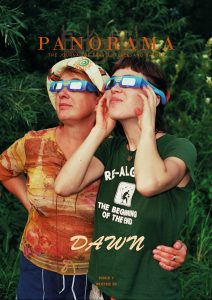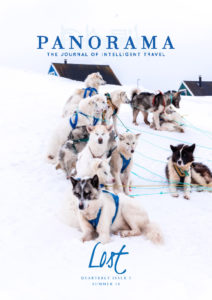Platoro Valley (Colorado)
Laguñitas to Abique to Albuquerque (New Mexico)
We ride through the picturesque valley that extends south of Platoro along a wide river through grassy fields. We are four people on mountain bikes, riding on dirt trails to Albuquerque —
together.
It is early August. Everything is lush from the wet season. We are encased in mountain peaks that bookend the river valley, infinite. The riding is smooth along roller hills that bounce up and down, effortlessly. The hills and mountains align themselves in overlapping layers like paper cutouts on a theatre screen in deep blues and greys. I am reminded of the Mississippi river valley, the Driftless, except the river is smaller here, and the mountains enormous —
drift —
sense, becoming.
Eventually, the gravel road ends and turns into a smooth paved climb that curves around bends to a lookout of the valley. Examining the maps, we talk about crossing the Colorado border. Today, tomorrow —
We will enter New Mexico, by way of barbed wire and wooden gate, A National Forest sign announcing our arrival, the only notion we’ve crossed state lines. Pine, aspen, and grassy fields stretch past our view.
The mechanic and the artist have a conversation in stillness, about movement:
We continue on Pavement up La Murga
Pass, 10,230’. It’s a fairly easy climb — not a
steep gradient at all. After we descend we tried
to stop at a café that is marked on
the map — CLOSED. We set up lunch in the
shade on the porch of the café, and
the Cumbres and Toltec steam engine train shuffles
through while we eat. Charlie is
excited; it’s really cool to see. The whistle
echo was incredible in the valley.
Field and open sky slices through
mountains. Ageless. Glacier movement set
in time. Drift less — eating cucumber,
hummus, and sausage. I add cold water to
instant potatoes and dehydrated beans
and rice. Shade from the sun before we
continue.
The riding is fairly easy, roller-coasting
along the edge of the hill. Snacks/early
lunch in Horca on Highway 17. Apparently,
the town is only 23 miles up the road, but
no one seems to know where it is.
We cut through the forests and dive deep
into a campground area to fill our water
bottles. We meet a group hunting for
mushrooms, and another couple RV-
camping, while we fill water at the
bathroom. The wife chats with John
and Patrick, I wander away, lost in my
own world thinking about fishing, maybe we
should have brought a fishing rod? From a
distance, I see the woman handing Patrick a
$20 bill and nods towards the bikes. For ice
cream, it’s hot today.
The road turns rough and twisty and
awesome. There was a good chunk of un-
ride-able rocky uphill single track, Charlie
took it as a challenge, and mostly defeated
it. We plateaued on Brazos Ridge —
overlooking the Cruces Basin Wilderness.
While descending we met a guy who is in
charge of mapping the Continental Divide
hiking trail for mountain bikes. There are
many new trails in the area and he points
us to some singletrack that will take us
directly to the campground.
We emerge from trees and encounter scree
as far as we can see — to the other side.
From Norse, skridha, landslide.
Shards. Body. Pieces too small, discarded.
Present in numbers.
The trail is difficult, but worth it. Patrick,
with his three-inch tires seems to navigate the
loose rocks best. We ride along the edge of
a steep ridge before dropping down to the
Lower Laguñitas campground for the night.
Loose stones cascading down a mountain.
A five-inch flattened line across the expanse of
the shattered stones. A panic expands, fear
of heights, fear of death, fear of breaking.
Mental challenge — loose stone shards —
builds in my mind, those that collapse from
the ridge into oblivion. And I hold back, and
cry as the other three ride, effortless across.
Too narrow to walk too lose to continue.
Statue: Girl on bicycle. 72”x90”x30,” metal,
rubber, stone, fabric and flesh.
She seemed stuck, so I called out.
Vertigo, hungry. Brain stopped. Human
survival took over for the moment —
hunger, fear of falling.
Super hot day. There isn’t a huge amount of
elevation gain, but there is a lot of up and
down. No towns today. We filter some
water before leaving the campground it
lasts pretty well. We pass Hopewell Lake
about halfway through the day, and are able
to fill our water stores — we didn’t know if
there would be more for the rest of the day.
A little climbing is left after we fill up, but it
is largely downhill to camp. The clouds that
were threatening to rain all day finally start
sprinkling just as we pull up to the site,
luckily it stops as quickly as it had started.
Dinner. Bear bag hang. Bed.
It took us three weeks to get into a rhythm.
And even that was stuttered.
Ritual is basically absent in our current
society, how do we reincorporate
contemplative ritual into our days? Focus
more on being. earth. body. intent.
Did you lube your chain today?
The lake is glassy, and I filter and sanitise
water with our UV light, Steri-pen. It’s an
amazing little contraption, though it takes
time. I suppose any water filtering takes
time, and I enjoy the scenery as I swirl each
water bottle. Two litres, six litres, eight. We try to
carry five each on average days, and fill up
regularly. On extreme days we have the
capacity of 13 litres. Water, life force liquid.
Today, we headed into Abiquiu. We
foolishly didn’t filter water before leaving
camp. Our #1 rule, broken. We were
banking on filling up in a few of the small
towns we were going through. New Mexico
is closed. We had to wait 20-some miles
until El Rito to get anything. We bought
lunch supplies at the general store and
drank iced tea and Gatorade—there was no
sink. We hoped to fill up at the community
college—“Non-Potable.” We roll on
pavement 9 miles out from Abique and
we’re able to fill up at the local 4-H office,
good thing, very hot. We get into town, ice
cream first.
New Mexican green hills empty out into
desert — rock, red, tan, golden sun, and
heat. Sand and adobe buildings. The desert
feels desolate, and maybe I need more time
to be acquainted with its strange solitude.
Once, I hitchhiked across the northern
Chiléan and Argentina deserts taking note
of extreme geological formations and the
colours. Such uniqueness, a memory of its
own kind. It was winter and the days were
perfectly warm, that macrosian light of
winter, shadows long and contrast. I
sketched and painted watercolours of scenes
that I imagined could have been from other
planets — moon, celestial. Valle de la Luna,
Sera del Siete Colores, La Salinas. Salt, sand,
and rock. How many ways can one describe
rocks? The winter nights in South American
desert, I huddled in my sad, anemic, down
sleeping bag, frosted, hoping morning
would arrive quickly so I could nap in the
sun. One night at 15,000 feet above sea
level, I entered an unexpectedly bizarre
service at a catholic church, which
incorporated high Andes ritual, incense of
native plants, a call for spirits Andean and
Catholic. Afterwards, I begged the Priest to
let me sleep inside. He refused, and then led
me to the activity shed through the stone
gate at the backside of the church. Grateful
for a roof over my head and respite from
the wind, I woke up with frost all around
the sleeping bag, condensed breath frozen.
Unfamiliar desert landscape.
Good Lord. Nine hours on the bike, 40
miles, 6,000 feet of climbing over baby-head
sized stones, boulders, sand, rock shelves
with sand in between. More sand. By far,
the most difficult day.
Foreign desert landscape.
It started out hot and flat — we got hit by a
four-minute hail riddled downpour early on
before we started climbing. Luckily it stayed
overcast for the rest of the day. We rode
across Polvadera Mesa. Beautiful and
incredibly difficult riding.
Listening all day as fist sized rocks scratch
and clunked along large sheets and
platforms of smooth rock slabs against our
best efforts to gain elevation. Two wheels
seemingly effortful against all the sand
crushed between the slabs and veiled thinly
on the boulders we ride on. Slippery,
sandstone, we climb all day. The descent is
worse.
We stopped for lunch and hung out for a
while after eating. We started again — it was
3:30pm and we’d only gone 20 miles. We
climbed another gruelling eight miles before we
started descending. We went down almost
as slowly as we climbed. The road was torn
apart by Quads and erosion — very loose
and treacherous.
I am riding well today, this climbing, lost in
the moment, our last days. I take in the
sounds of wild New Mexico, quiet place,
and think of the Atacama Desert, a place of
extreme quiet, solitude. Atacama, with
rainfall less than every hundred years, is
hibernating, sandy. Each desert place has
its own identity. How many names to
describe desert? Today, the guys are not
feeling well, complaining of stomach issues,
especially Charlie, grunting his way up our
cruelest trail. I empathise — that pain.
Though the pain chronically lingers in my
body through “civilised-life”, pain is absent
here in the wilderness. While on trail, my
digestion is perfect. Grateful for such
presence of absence, pain, worry, sound.
We camped a mile before our turn-off of
the Great Divide Mountain Bike Route,
high above the world in a cow pasture.
Dark was coming fast and we were
exhausted. We only saw one car all day. It
was our last camp meal and last night in
the tent. The night was beautiful, not too
cold, no rain, no bears, no cows.
Silence is not a luxury, it is essential.
Gordon Hempton, audio ecologist, says.
Sleeping field, silence of nature, chatter. It
is that silence that fills my heart. Streams
cutting through mounds of dirt, birds,
critters, insects flying through grass, insects
plopping on the surface of the stream, fish
and frogs existing, entering, water music.
breath. with silence, you hear the grass
wind, aspen wind, pine wind, sap dripping
from tree branches, incongruous with
conversation, and we listen. presence.
We pass across the fence, an imagined margin, thus entering New Mexico. As if I thought that beyond that line was to turn rocky and red, tan, and sandy, immediately, I am in awe of riding the next couple of days in unexpectedly shaded forests. Aspen trees that shake, tonal percussion in the breeze — aspen wind. The spruce, tall and fragrant, their needles create tonal percussion in the breeze — spruce wind. Saratoga pines create tonal percussion in the breeze — Saratoga wind. Ponderosa pine, tonal percussion in the breeze — Ponderosa wind.
Sometimes the pines drip, creak, and moan in unison, sometimes in contrast with the aspen’s cool, tinny vibrations.
Thin dense grasses are soft under foot, the ground cover shake — percussion in the wind — grass wind.
Sounds of the crickets pulsate in a unison beat, call and response song.
xri. xri. xri. xri. xri. xri. xri. xri. xri. xri. xri. xri. xri. xri. xri.
xri. xri. xri. xri. xri. xri. xri. xri. xri. xri. xri. xri. xri. xri. xri.
xri. xri. xri. xri. xri. xri. xri. xri. xri. xri. xri. xri. xri. xri. xri.
xri. xri. xri. xri. xri. xri. xri. xri. xri. xri. xri. xri. xri. xri. xri.
xri. xri. xri. xri. xri. xri. xri. xri. xri. xri. xri. xri. xri. xri. xri.
xri. xri. xri. xri. xri. xri. xri. xri. xri. xri. xri. xri. xri. xri. xri.
What is the radius of this uniform vibration as it is carried by the grassy field? The sound song grows more and more distant; maybe the crickets’ uniform song is limited only by extreme geographical constraints such as the ocean and deep deserts. The sound travels in waves and spreads distances so that more crickets catch on to the call and response, a pulsating, echoed xri. xri. xri. xri. xri. Maybe all the crickets on this side of the Divide are sounding together: call, response.
Sound as material; as experience
The music is presence; it is place — New Mexican music.
Away from the cities we decompress as humans allowing our ears to relax into the natural sounds, silence from the man made noise. Our ears yield into wilderness silence.
“A symphony of life,” Gordon Hempton suggests that the sun and our atmosphere create the universe’s most incredible musical score, acoustics of natural life, and it is how one experiences place, real place. Interconnecting all movement and vibrations and stillness and physics and cause and effect to create this poetics of space.
Our natural silence is on the extreme verge of extinction, and our modern world has forgotten the deep ability to listen. Our machines, and electricity, and concrete create noise, echoes, and acoustic clutter. Not being able to close our ears, our brains filter the onslaught of sound vibrations and persuade the perception of hearing. What would the world sound like if all humans were to remain in perfect stillness for an hour? Would our breath pulsate like the crickets in a call and response of life? Would we wake to the presence of silence, the activation of the world in motion while we, calm our bodies and brains to receive, openly, silence?
After weeks of riding in the backcountry, the sounds of the natural world would soon be replaced with the constant buzzing of electricity and clanking of automobiles in the city. The thought of it induces a dulling thud in my heartbeat and heated vibration in my ears.











